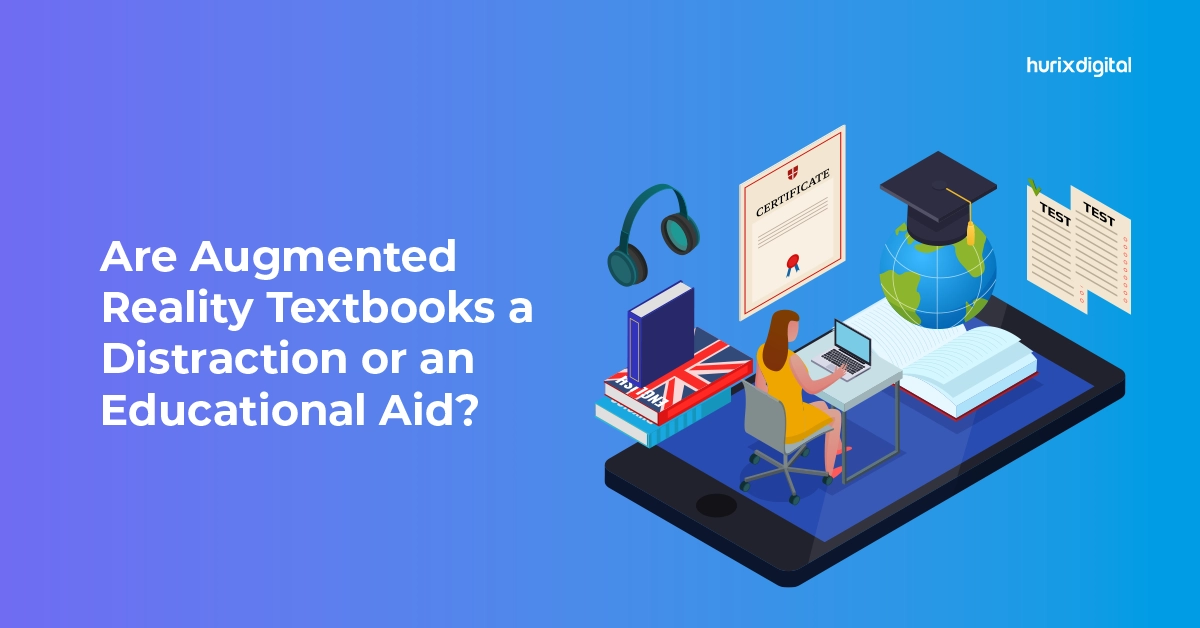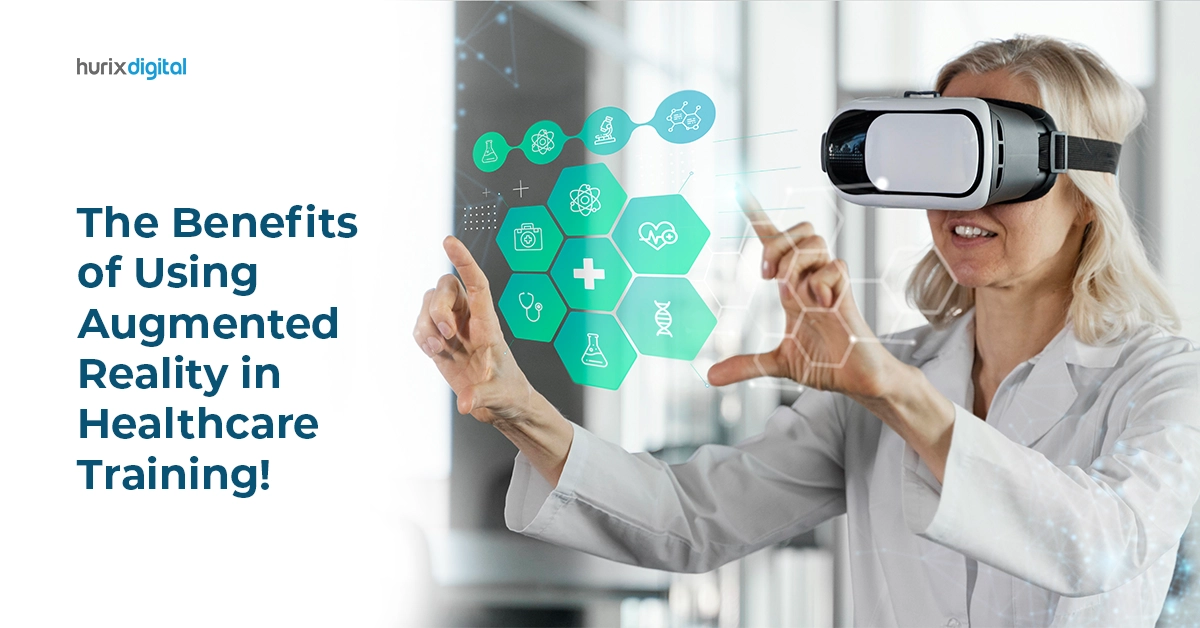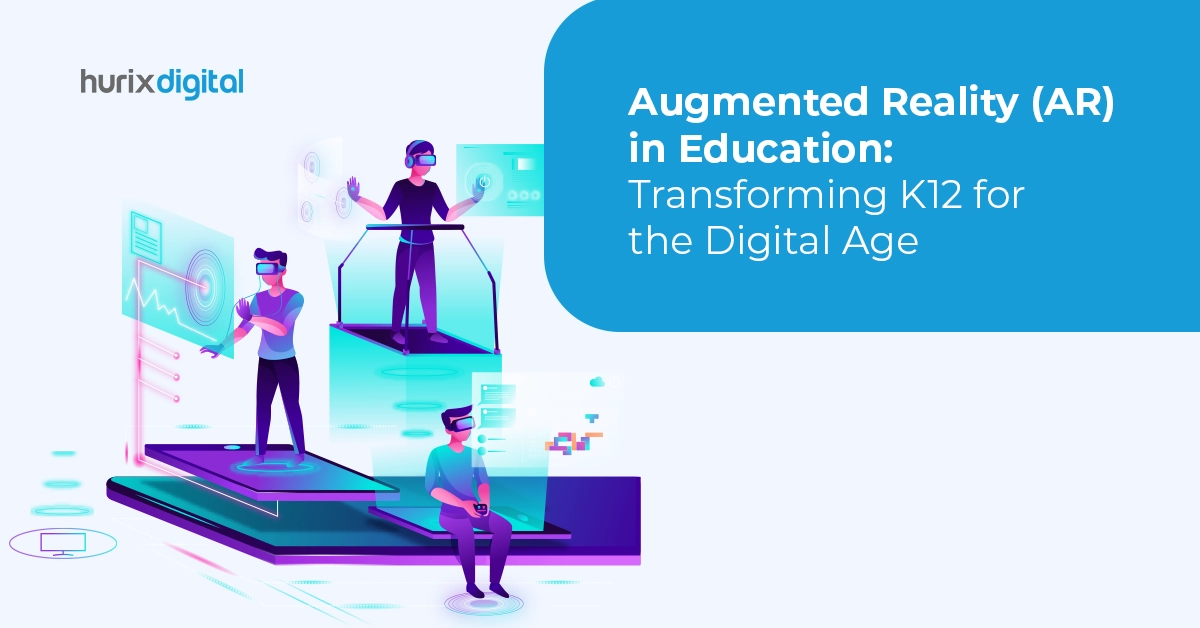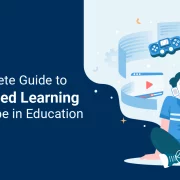
Are Augmented Reality Textbooks a Distraction or an Educational Aid?
Summary
This blog post explores whether AR textbooks are a distraction or an educational aid. It discusses how AR enhances learning by making content interactive and engaging, while also addressing potential challenges.
AR is a technology that involves visualizing a real-world environment with computer-generated 3D features. In education, augmented reality enriches conventional textbooks by providing students with actual 3D models, animated figures, and exercises in addition to regular reading. The best way to describe the impact of this technology in the learning world is that it is more like living the experiences than just reading them.
It’s captivating, but it begs the question: Are these digital enhancements boosting our understanding, or are they just flashy distractions?
Well, that is what we are here to find out: Are these AR textbooks truly transforming education?
Table of Contents:
- The Basics of AR in Educational Textbooks
- Case Study on How AR in Education Improve Learning Outcomes?
- The Gimmick Debate – Is AR Just a Distraction?
- The Bottom Line
The Basics of AR in Educational Textbooks
Augmented reality is a technology that overlays digital content onto the physical world through devices like smartphones, tablets, or AR glasses. But how does it make it possible? Well, it’s pretty simple.
When you scan specific images or codes in the textbook with an AR-enabled device, it triggers the digital content to appear on your screen. This seamless amalgamation of digital and physical worlds makes learning much more exciting and interactive.
AR brings a wealth of features to interactive textbooks. For example, a biology textbook might use AR to project a 3D model of the human brain. This would allow students to explore its anatomy in detail from every angle. Similarly, AR in math books might offer interactive exercises that provide instant feedback and hints.
Also Read: Can GPT-4 Revolutionize Education? Exploring the Pros and Cons
Case Study on How AR in Education Improve Learning Outcomes
A study was conducted to explore how augmented reality in education can improve learning and critical thinking for 8th-grade students. The researchers focused on how different AR designs (image/mark) interact with students’ mental capacities (high/low) and how these factors affect their learning retention (LR) and critical thinking (CT).
1. Introduction
The study involved 120 students from six schools, split into control and experimental groups. The aim was to see if AR-based digital learning could boost students’ ability to retain information and think critically. It also examined if AR impacts male and female students differently in science learning.
2. Findings
The results were clear: students who used AR showed better student engagement, learning retention, and critical thinking skills than those who didn’t. Students with higher mental capacities benefited more significantly in terms of critical thinking. Interestingly, male students’ science learning outcomes improved more with AR compared to female students.
AR technology proved to be a valuable educational tool, enhancing retention and critical thinking skills. The study suggests that future research could further explore these benefits, particularly in underserved communities, to maximize AR’s potential in education.
The Gimmick Debate – Is AR Just a Distraction?
Despite AR’s proven benefits in enhancing learning retention and critical thinking, some educators and parents worry it might be more of a flashy gimmick than a true educational tool. The concern is that its engaging and interactive nature could distract students from deeper, more focused learning.
Critics argue that while AR captures attention, it may shift focus away from fundamental skills and knowledge, making it crucial to balance innovation and traditional learning methods.
Here are a few more potential drawbacks of Augmented Reality in the education world that raise the question of it being a technical gimmick.
1. Distraction and Overstimulation
The growing concern about using AR in learning is its effect on attention-deficit behavior and overstimulation. AR features are meant to elicit positive experiences and enhance people’s interactions with a device or application, yet there is a thin line between interesting and diverting.
Participating in such AR experiences may lead students to be more concerned with the fun element than the content being taught.
Likewise, AR can also lead to some difficulties in the sensory processing of information, especially in young children. The Child Mind Institute has defined Difficulty in Sensory Processing as when children have difficulties managing the information the senses get from the environment.
The stimulating aspect of AR as a classroom technology could potentially be too much for certain learners, and the teacher would find it difficult to teach because the learners are distracted.
2. Technical and Configurational Issues
Technical problems are another significant hurdle. It’s obvious that, like any other learning technology, AR integration also relies on devices like smartphones and tablets, which must be compatible with the AR software.
Therefore, issues like software glitches, connectivity problems, and poor user interfaces can disrupt the learning process.
Consequently, these technical difficulties can frustrate students and teachers, interrupting the flow of lessons and reducing AR’s overall effectiveness as a learning tool.
3. Cost and Accessibility Concerns
Another barrier is the cost of AR-capable devices and software. High-quality AR experiences often require advanced hardware and software, which can be expensive. This creates socio-economic barriers and limits access to AR learning tools for students from low-income families or underfunded schools.
The disparity in access can widen the educational gap. Thus making it challenging to achieve widespread adoption of AR textbooks.
Check out EXCLUSIVE: Harnessing the Power of Tech-Infused Education – Students and Educators Alike
The Bottom Line
While applying augmented reality is promising in increasing the motivation of learners and transforming education with the help of tools that it provides, its integration must be done rather carefully not becoming just a fancy addition. When well-chosen and well-applied, AR helps increase knowledge retention and the capacity for critical thinking.
At the same time, educators should ensure that the methods do not replace basic educational approaches but enhance them with interesting and original content. Talentedly balanced, AR can become a tool that preserves the value of acquiring knowledge.
Hurix Digital has the expertise and power to revolutionize education with tailored course development services for K12 schools and universities. Our team has full-blown experience in curriculum designing, curating engaging instructional content, and captivating media production to create unforgettable learning experiences.
Discover the difference our expertise can make in your classroom and elevate education to new heights with Hurix Digital.
Contact us today to learn more about our services!

Senior Vice President
A Business Development professional with >20 years of experience with strong capability to sell new solutions and develop new markets from scratch. New Market Entry Specialist with experience of working in two of the largest emerging markets – China & India. Also covered other key markets in APAC, US, EU & ME. Exceptional experience of conceptualizing, ideating and selling new learning technologies like VR AR, etc. across multiple industry verticals.





